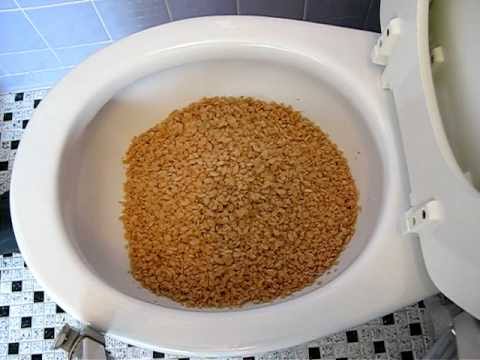Is it Sensible to Dispose of Food in the Toilet?
Is it Sensible to Dispose of Food in the Toilet?
Blog Article
How do you actually feel about Think Twice Before Flushing Food Down Your Toilet?

Intro
Lots of people are often confronted with the dilemma of what to do with food waste, particularly when it involves leftovers or scraps. One typical concern that emerges is whether it's okay to purge food down the bathroom. In this write-up, we'll delve into the reasons that people might take into consideration purging food, the consequences of doing so, and different methods for appropriate disposal.
Reasons that individuals might take into consideration purging food
Lack of recognition
Some people may not be aware of the potential harm caused by purging food down the bathroom. They might incorrectly believe that it's a harmless practice.
Ease
Purging food down the toilet may look like a fast and simple remedy to getting rid of undesirable scraps, especially when there's no nearby trash bin readily available.
Laziness
In many cases, people may merely choose to flush food out of sheer idleness, without taking into consideration the consequences of their actions.
Repercussions of flushing food down the toilet
Environmental effect
Food waste that ends up in waterways can add to pollution and damage water communities. Furthermore, the water made use of to flush food can strain water sources.
Pipes problems
Flushing food can lead to stopped up pipelines and drains, triggering costly plumbing repairs and troubles.
Kinds of food that need to not be flushed
Coarse foods
Foods with fibrous appearances such as celery or corn husks can get entangled in pipes and create blockages.
Starchy foods
Starchy foods like pasta and rice can soak up water and swell, causing clogs in pipelines.
Oils and fats
Greasy foods like bacon or cooking oils ought to never ever be purged down the bathroom as they can solidify and create obstructions.
Correct disposal techniques for food waste
Making use of a waste disposal unit
For homes outfitted with garbage disposals, food scraps can be ground up and flushed via the plumbing system. Nevertheless, not all foods are suitable for disposal in this fashion.
Recycling
Certain food product packaging materials can be reused, minimizing waste and lessening ecological influence.
Composting
Composting is an eco-friendly way to dispose of food waste. Organic products can be composted and utilized to enhance soil for gardening.
The relevance of correct waste administration
Minimizing ecological harm
Correct waste administration methods, such as composting and recycling, aid lessen contamination and protect natural deposits for future generations.
Protecting pipes systems
By avoiding the practice of flushing food down the bathroom, house owners can avoid costly pipes repair work and maintain the honesty of their plumbing systems.
Final thought
To conclude, while it may be appealing to purge food down the toilet for ease, it is necessary to recognize the possible effects of this activity. By embracing correct waste monitoring techniques and dealing with food waste responsibly, people can contribute to healthier plumbing systems and a cleaner setting for all.
FLUSH FOOD DOWN THE TOILET?
FLUSHING FOOD CAN CAUSE BLOCKED DRAINS IN YOUR HOME
All of the plumbing fixtures in your home are connected to the same sewer pipe outside of your home. This outdoor sewer pipe is responsible for transporting all the wastewater from your home to the Council sewer mains. Even small pieces of food that go down the kitchen sink can cause problems for your sewer. It should therefore be obvious that flushing larger bits of food, such as meat, risks a clog in either the toilet itself or the sewer pipes. Flushing greasy food is even more problematic because oil coagulates when it cools, coating the interior lining of your pipes.
THE TOILET IS NOT A BIN
Food isn’t the only thing that people shouldn’t be flushing down the toilet. People use the toilet to dispose of all kinds of things such as tampons, makeup wipes, dental floss, kitty litter and even underwear. Water goes to great lengths to educate residents about the high costs and stress placed on wastewater treatment systems simply from people flushing the wrong stuff down the toilet. It costs taxpayers millions of dollars each year, and homeowners thousands in blocked drain repairs.
FLUSHING FOOD IS A WASTE OF WATER
Flushing food is a waste of our most precious resource - water. In June this year Level 1 water restrictions were introduced to protect water supply from drought conditions. Much of New South Wales continues to be affected by prolonged drought with recent figures revealing up to 97 per cent of the state remains in drought. Depending on whether you have a single or dual flush toilet, every single flush uses between five and 11 litres of water. In the current climate this is a huge amount of water to be wasting on flushing food that should be placed in the bin (or better yet, the compost).
https://www.jabplumbingsolutions.com.au/blog/can-you-flush-food-down-the-toilet

Hopefully you liked our article on Is it safe to flush food (especially rice) down the toilet?. Thank you for taking the time to read through our blog. Feel free to set aside a second to share this article if you enjoyed it. I cherish your readership.
This Post Report this page